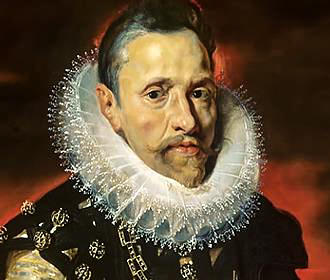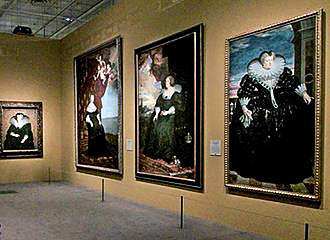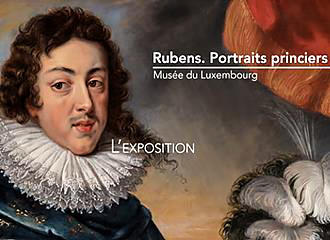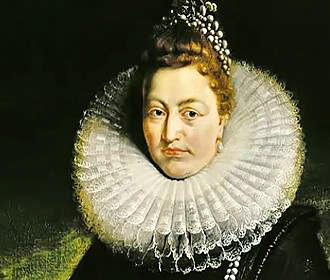Paris Musee du Luxembourg History
Incredibly this was the first true French museum to open its doors to the public in the 1700s, which was then housed within the Palais du Luxembourg that had been constructed for Marie de Medici, and showcasing many priceless art works from names such as Raphael and Rembrandt, today it is in a dedicated building, playing host to themed temporary exhibitions.
Musee du Luxembourg History Beginnings
It was the year 1750 when the Director of the Kings buildings first installed a public art gallery into one wing of the Palais du Luxembourg, and known as the Cabinet du Roi, these were French and foreign canvases from the royal collections that became the first public art gallery in France.
And the other wing was where people could view the 24 paintings produced by Rubens that had been commissioned specifically for this long gallery by Marie de Medici, and only open a couple of days each week, this Paris museum was unfortunately short lived.
In fact, the future King Louis XVIII was living at the Petit Luxembourg, and decided to have the gallery closed in 1780, although he fled from the palace a decade later, and the palace became completely deserted for the first time since its construction.
But during the French Revolution the Luxembourg Palace was turned into a prison for a short while, and then it became home to the Directoire Executive, but the cost to the state for the lavish entertainments organised drove out the directors, and then the senators of the Empire succeeded them.
So, instead of being a palace fit for kings and queens, it was now the turn of a parliamentary body to be housed at the Palais du Luxembourg, yet Napoleon Bonaparte required that the palace should be altered for an even more imposing style that he desired.
This is when the architect Chalgrin was instructed to remove a terrace at the back of the main courtyard and remove the gallery that housed the 24 Rubens paintings of the original Musee du Luxembourg, which were subsequently installed within The Louvre, and this is where they can still be seen today.
Musee du Luxembourg history next stages and its reopening
Although the Musee du Luxembourg did reopen in the early 1800s, all of the original paintings, such as those from famous artists like Leonardo de Vinci, were all transferred to The Louvre and in 1818 the museum became designated as one for living artists, showing works from people such as Eugene Delacroix.
A few decades later, the Senate, who were in charge of, and held the responsibility for the Jardin du Luxembourg and the Palais du Luxembourg, decided to have a building constructed that would be dedicated to the Musee du Luxembourg, which was built between the years 1884 and 1886, and is where the museum can still be found today.
It was a bequest known as the Caillebotte bequest, which was to be the first exhibition held within the new building of the Musee du Luxembourg, yet paintings from artists such as Monet and Renoir were eventually transferred to other Paris museums including the Musee d’Orsay, and when the Palais de Tokyo was opened in 1937, the Musee du Luxembourg closed its doors once again.
Musee du Luxembourg history the late 1900s to present
It was not until 1979 that the Musee du Luxembourg opened its doors to the general public once again, and run by the Ministry of Culture, there were exhibitions put in place to highlight the heritage of France and the history of Paris, although the programme was still overseen by the French Senate.
However, in the year 2000, the Senate decided to take full responsibility for this museum, but also integrate a policy to ensure the future and the history of the Jardin du Luxembourg, the Palais du Luxembourg and of course the Musee du Luxembourg.
This is where things started to change with renovations and refurbishments, all of which were designed to incorporate the historical aspects as well as creating new environments for future generations to enjoy.
So, in 2010, the Senate delegated the museum to the Grand Palais and the Reunion of National Museums who organise the special themed exhibitions that take place at the Musee du Luxembourg, even though they are still under the watchful eye of the Senate.
However, the organisation in control of the Grand Palais arranges over forty different exhibitions each year, and at least two of these are now housed within the Musee du Luxembourg.
But other changes have happened more recently from 2010 onwards including the addition of the Angelina Tea Room and restaurant at the Paris Musee du Luxembourg, along with another building constructed on the outside for workshops, plus even some of the interior has been designed differently, also making this museum disabled friendly.



